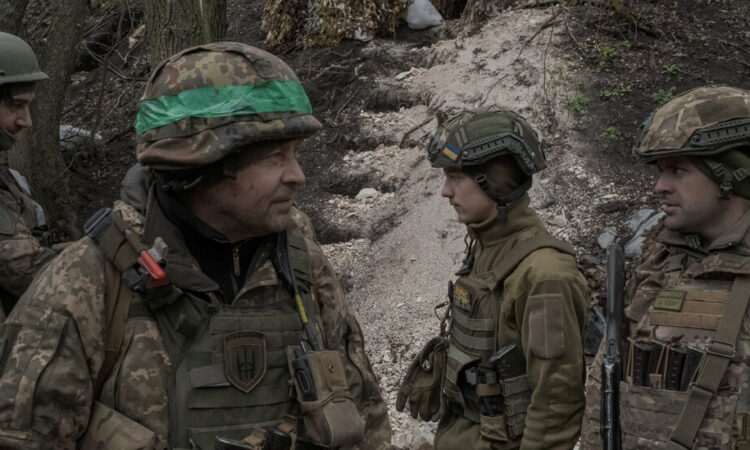
What leaked U.S. documents reveal
A trove of secret Pentagon documents has appeared on social media in recent days and shows just how deeply the U.S. has penetrated Russia’s military and intelligence services. They also reveal that the U.S. appears to be spying on some of its closest allies, including Ukraine, Israel and South Korea.
The intelligence portrays a battered Russian military that is struggling in its war in Ukraine and a military apparatus that is deeply compromised. The leaked material, from late February and early March, also shows daily real-time warnings to U.S. intelligence agencies on the timing of Moscow’s strikes — and even specific targets. Here’s what we know.
The documents show that the U.S. has been able to pass on crucial information to Ukraine, which the reports reveal is in dire straits. But the leak has the potential to do real damage to Ukraine’s war effort. Exposing which Russian agencies the U.S. knows the most about could give Moscow the opportunity to cut off the sources of information.
The leak has also complicated relations with allied countries and raised doubts about the U.S.’s ability to keep secrets. Publicizing eavesdropping on allies always hampers relations with key partners — like South Korea, whose help is needed to supply Ukraine with weaponry — and could curb intelligence sharing.
Context: The material reinforces what intelligence officials have long acknowledged: The U.S. has a better understanding of Russian operations than it does of Ukrainian planning.
Other news from the war:
China’s drills around Taiwan
China is expected to wrap up three days of military exercises around Taiwan today. The drills appear to be in response to the U.S. visit of the island’s president, Tsai Ing-wen, who met with the speaker of the U.S. House of Representatives last week in California.
The Chinese military said the air and sea “combat readiness” patrols and drills would be held on all four sides of Taiwan and include a live-fire exercise near Pingtan, a Chinese island facing Taiwan. Taiwan said Saturday that China had sent 71 military aircraft into the skies around the island. Those included 45 that crossed the median line in the Taiwan Strait, an informal boundary, a jump from the usual number of such sorties.
“This is a stern warning against the collusion and provocations of the ‘Taiwanese independence’ separatist forces and external forces,” a Chinese military official said in a statement announcing the sea and air drills.
Show of force: China’s display of military power had echoes of Beijing’s actions in August, when the previous U.S. House speaker, Nancy Pelosi, visited Taipei. But China’s response appeared initially to be more limited than the one after Pelosi’s visit.
French diplomacy: China began the exercises after President Emmanuel Macron’s trip to China. The French leader staked out an independent European position, undercutting U.S. efforts to rein in China.
Analysis: The two visits highlighted how the U.S. and Europe have different priorities on China.
A change at the World Bank
Shareholders are gathering in Washington for the annual spring meeting of the World Bank, which begins today. At the center of the discussions will be Ajay Banga, who is widely expected to be confirmed as the bank’s president in the coming weeks and will take over this summer. Banga will be scrutinized over how he uses the bank to confront climate change.
Leaders and academics are pressing the bank to do more to help poor countries grappling with climate change. For years, critics have said the global institution hasn’t adequately responded to the crisis. Major shareholders have approved some initial reforms, including agreements to let the bank lend more money and attract more private investment.
Banga must walk a fine diplomatic line. He was nominated by the Biden administration, and the U.S. wants the bank to help weaken China’s influence in the developing world and provide an alternate lending option. Experts say that the debate over more funding for the World Bank raises the question of why China continues to borrow from it.
Read more: Banga, who grew up in India, would be the first World Bank president from the developing world. In a decade as the chief executive of Mastercard, he built the company into a powerhouse now worth $350 billion.
THE LATEST NEWS
Asia Pacific
Around the World
The Sabzak Pass, in Afghanistan, is covered in snow six months of the year and the trek across the long stretch is often treacherous. For travelers in distress, one innkeeper has become something of a guardian, delivering food, bringing them to safety or calling a mechanic to help with repairs.
ARTS AND IDEAS
India’s tigers bounce back
At the time of India’s independence in 1947, there were tens of thousands of tigers roaming the country. By the early 1970s, there were just 1,800, a collapse caused mostly by a rapid expansion of trophy hunting. But half a century of intense conservation work has reversed the trend.
India’s latest tiger census showed a near doubling of the population, to 3,167. Anti-poaching measures and larger tiger reserves have allowed the population to rebound. The extra space is important: Tigers need to roam for food.
The conservation effort has worked so well that India feels it has enough tigers to consider sending some to Cambodia, where poaching and hunting has also devastated the wild population.





